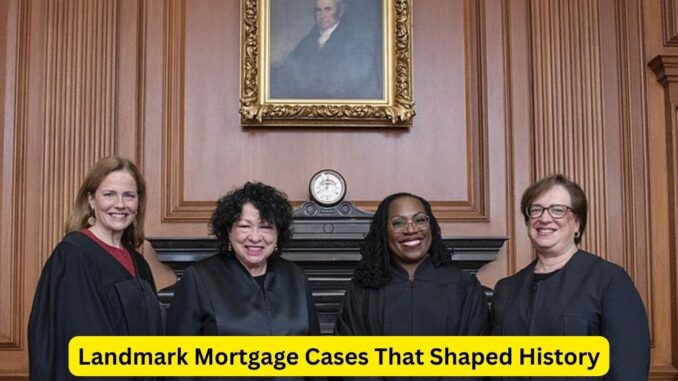
Throughout history, several legal cases have profoundly influenced mortgage laws and practices, setting precedents that continue to impact the industry today. These landmark cases have shaped regulations, clarified borrower rights, and established principles that define mortgage lending and homeownership.
One such pivotal case is Jones v. First National Realty Corporation (1962), which addressed discriminatory lending practices. This case highlighted the illegality of redlining, a discriminatory practice where certain neighborhoods, often based on race, were systematically denied mortgage loans. It set a crucial precedent, establishing the Fair Housing Act of 1968, which aimed to eliminate housing discrimination and promote fair lending practices.
Another landmark case, Jones v. Farmers and Mechanics Savings Bank (1882), focused on the legality of mortgage assignments. The ruling affirmed that a mortgage could be legally transferred from one entity to another, establishing the foundation for modern mortgage securitization practices commonly seen in today’s secondary mortgage market.
In 2009, Ibanez v. U.S. Bank National Association became a pivotal case addressing foreclosure laws. The Massachusetts Supreme Judicial Court ruled that foreclosures could not proceed if the foreclosing entity did not hold the mortgage and note at the time of foreclosure. This case underscored the importance of proper documentation and adherence to legal procedures in foreclosure actions.
Furthermore, the landmark case Marbury v. Madison (1803) set the precedent for judicial review, affirming the power of courts to interpret laws’ constitutionality. While not directly related to mortgages, this case established the principle that courts have the authority to review laws and decisions, influencing how mortgage-related disputes are settled and interpreted within the legal system.
The Great Depression-era case, Home Building and Loan Association v. Blaisdell (1934), upheld a state’s right to impose temporary mortgage relief measures during economic crises. This decision validated state intervention to prevent foreclosures, a precedent that has been referenced during subsequent financial crises to justify government intervention in the mortgage market.
Additionally, the case of Winters v. Washington Mutual (2004) raised important questions about predatory lending practices. This case highlighted the duty of lenders to disclose all terms and risks associated with loans and upheld the borrowers’ rights against unfair or deceptive lending practices.
These landmark cases have not only shaped mortgage laws and practices but have also contributed to the evolution of consumer protections, fair lending regulations, and the overall framework governing the mortgage industry. They serve as guiding principles that continue to influence legal interpretations and policy decisions in mortgage lending, emphasizing the importance of fairness, transparency, and adherence to legal procedures in the realm of homeownership and property financing.

Leave a Reply